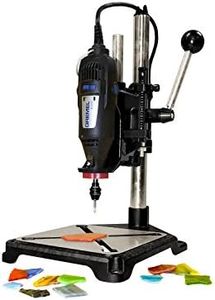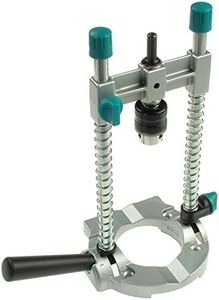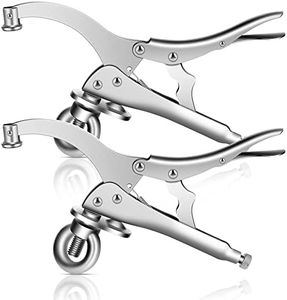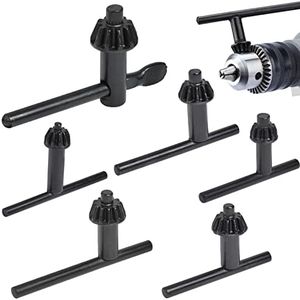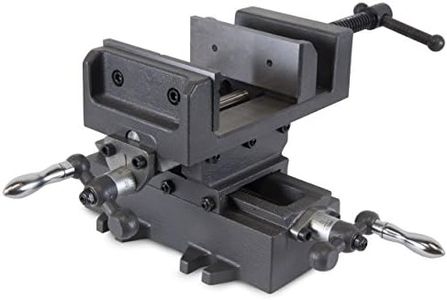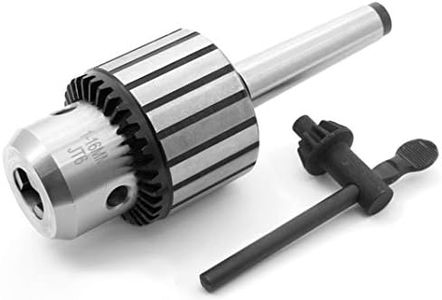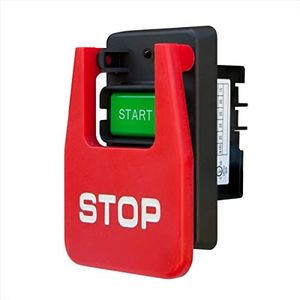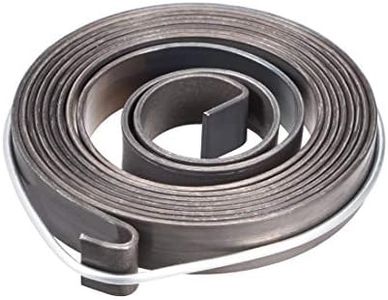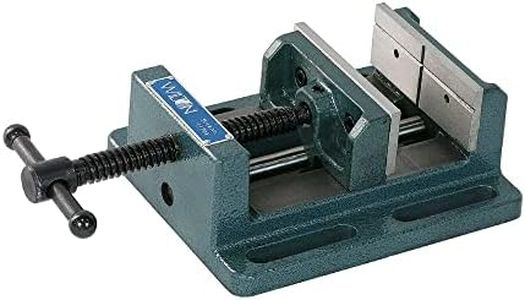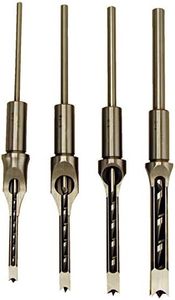We Use CookiesWe use cookies to enhance the security, performance,
functionality and for analytical and promotional activities. By continuing to browse this site you
are agreeing to our privacy policy
10 Best Drill Presses
From leading brands and best sellers available on the web.Buying Guide for the Best Drill Presses
Choosing the right drill press is all about matching the tool to your work needs, space, and experience level. Drill presses can make precise holes in wood, metal, and other materials, and are often used by woodworkers, metalworkers, and DIY enthusiasts. Start by thinking about the size and types of materials you’ll be working with, as well as how often you plan to use the drill press. The key is to focus on the main specifications and features that affect performance and ease of use so you can confidently select a drill press that suits your projects.Drill Press Size (Swing and Spindle Travel)Drill press size refers mainly to two things: the swing and the spindle travel. The swing is the distance from the center of the spindle to the supporting column, doubled, and it determines how big a piece of material you can drill into the center of. Spindle travel, sometimes called the quill stroke, is how far down the drill bit can move. For small projects or hobby work, a smaller swing (8-10 inches) is often fine, but for larger workpieces, you'll want a higher swing (12 inches or more). Match the size to the biggest pieces you'll handle. Similarly, if you need to drill deep holes, look for more spindle travel. Consider your typical project size to find a good fit.
Motor PowerMotor power in drill presses is usually measured in horsepower (HP) or amps. This spec tells you how powerful the drill is and affects what materials you can comfortably work with—low power is fine for wood and plastic, while higher power is better for thick hardwoods and metals. For hobby and light-duty work, a lower-powered motor (around 1/4 to 1/3 HP) suffices, but for regular, heavier jobs, 1/2 HP or above may be necessary. Think about the toughest job you’ll tackle and choose accordingly.
Speed RangeSpeed range means the spread of possible revolutions per minute (RPM) settings the drill press can achieve. Different materials and drill bit sizes need different speeds—lower RPM for metal and larger bits, higher RPM for smaller bits and wood. Many drill presses offer multiple preset speeds you can change by moving a belt, while some have variable speed dials. If you plan on working with a range of materials, choose a model with a wider speed range and easy speed adjustments. Narrower speed selections may be fine if your work is repetitive and focused on similar materials.
Table (Size and Adjustability)The drill press table is where your workpiece sits while you work. Table size matters if you need to support larger or awkwardly shaped items—it should be sturdy and big enough for your projects. Adjustability means you can tilt or raise/lower the table to get the angle and height you want. Some tables also offer slots or clamps for holding things in place. If you do angled drilling, look for a tilting table. For most users, a standard flat table with enough surface will do, but advanced projects may benefit from extra size or versatility.
Depth StopA depth stop is a mechanism that lets you set a specific depth for the drill bit to go, stopping automatically at your chosen point. This is crucial for repeat drilling to uniform depths, for example in joinery or metalwork. If you need to make a series of identical holes, or care about precision, having an easy-to-use and reliable depth stop is important. Occasional users making simple holes may not use this feature much, but for anyone needing accuracy, it’s a must-have.
Build Quality and StabilityBuild quality covers how well the drill press is constructed—look for sturdy columns, tight-moving parts, and a heavy base, which all help absorb vibrations and keep your drilling precise. A wobbly or flimsy machine can ruin your work and even be unsafe. If you plan on using the drill press frequently, or with tough materials, prioritize solid construction and a heavy, stable base. For occasional light use, a lighter build might be acceptable, but always opt for the best build you can in terms of stability for your safety and result quality.


